Surely everyone has seen the traditional Japanese Kimono costume in real life or on TV, phones, etc. If you are a fashion enthusiast, you will notice the unique, delicate patterns on this costume or on coasters, blankets, etc. In today’s article, Fashion Bandung will provide interesting information about Sashiko – The art of embroidery that has created masterpieces of Kimono with soft, vivid embroidery.
1. What is Sashiko?
Sashiko is a traditional embroidery art that originated in Japan during the Edo period (1615 – 1868). The term “Sashiko” translates to “piercing point” in Japanese. The technique was primarily practiced by lower-class farmers and fishermen who had limited clothing resources and needed to make their clothes last for future generations. This intricate embroidery style involves creating beautiful patterns by stitching together small, evenly spaced, white stitches on indigo fabric. Sashiko has now become popular worldwide for its aesthetic appeal and the skill required to create intricate designs.
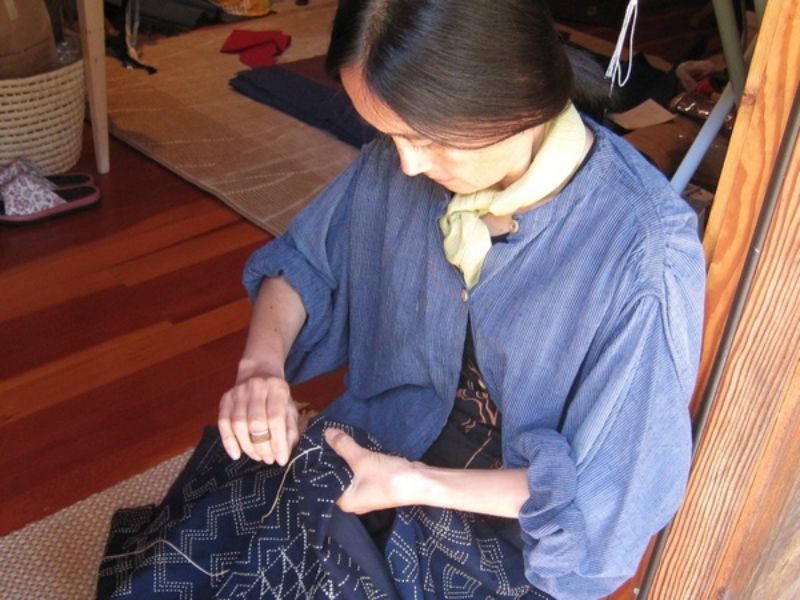
Sashiko is a traditional form of Japanese embroidery that involves stitching intricate patterns onto fabric. It is a technique that has been practiced for centuries and is characterized by its geometric designs and repetitive stitching. Sashiko is often used to strengthen and repair garments, as well as for decorative purposes. The process involves using a needle and thread to create small, even stitches on the fabric, resulting in beautiful and durable creations. It has gained popularity worldwide as a unique and artistic form of needlework.
Traditionally, Sashiko was a technique used to repair and reinforce torn or damaged areas on clothing. By stitching patches onto the fabric, it made the garments more durable, stronger, and thicker. The use of white threads on indigo fabric represented the image of snowfall on the ground during the cold winter. Sashiko embroidery has become a crucial skill for women in rural areas of the North, as it is essential for maintaining and prolonging the lifespan of their clothing.
Brief history of Sashiko’s development.
During the Edo period in Japan, which lasted from 1603 to 1868, it was discovered that cotton could not be successfully cultivated in the northern regions due to the extremely cold weather conditions. As a result of this limitation, a thrift edict was enacted in 1742 by the governing class system. The edict specifically targeted the peasant class, imposing a prohibition on the use of cotton materials, including headgear, clothing, underwear, and belts. The purpose of this edict was to ensure that resources were utilized efficiently and that alternative materials, more suitable for the climate, were utilized by the farmers.
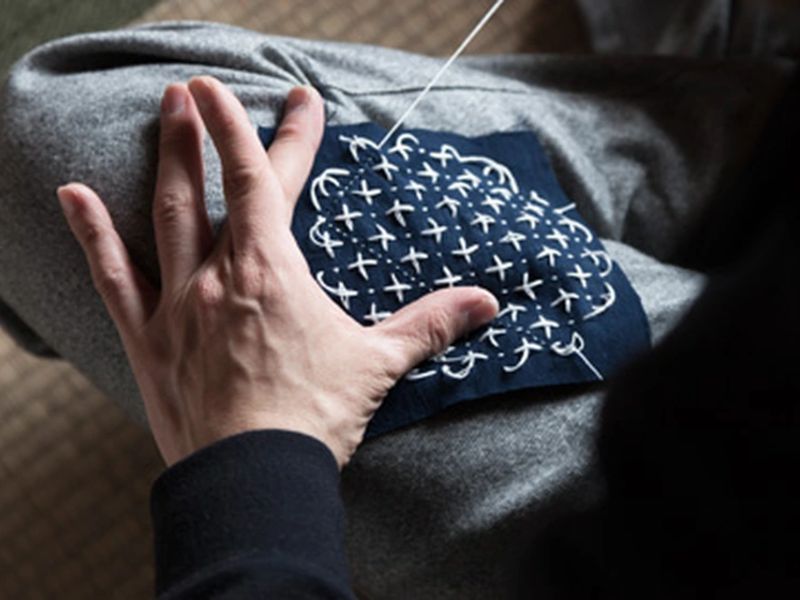
The development history of Sashiko is a fascinating journey that has spanned centuries. Sashiko is a traditional Japanese embroidery technique that originated in the Edo period (1603-1868).
During this time, Sashiko was primarily used for practical purposes such as reinforcing and mending clothing. It was commonly utilized by the farming and fishing communities in the northern regions of Japan, where harsh weather conditions demanded durable clothing.
The technique involved using a simple running stitch to create intricate geometric patterns on fabric. The stitches were traditionally made with white thread on indigo-dyed fabric, creating a striking contrast. This combination not only made the embroidery visually appealing but also enhanced the fabric’s strength and durability.
Over the years, Sashiko evolved from being purely functional to becoming an art form in its own right. As fashion trends changed and new materials became more accessible, Sashiko began to be used for decorative purposes. It became a popular craft among the women of rural communities, who would create intricate designs on their clothing and household items.
In the 20th century, Sashiko experienced a renaissance as artists and designers rediscovered its beauty and versatility. It gained recognition as a unique form of embroidery and started being showcased in museums and art galleries around the world. Today, Sashiko continues to captivate people with its intricate patterns, cultural significance, and the skill and patience required to create each piece.
The development history of Sashiko is a testament to the enduring beauty and craftsmanship of this traditional Japanese embroidery technique. It has evolved from a practical means of repair to a celebrated art form that is appreciated globally.
During a time when silk and cotton were prohibitively expensive and reserved for the noble class, and hemp clothing was prone to scratching, tearing, and fraying, Japanese farmers opted to use linen as an alternative. However, linen could only be worn comfortably during the summer and was not suitable for the cold winter months. In the face of these challenging circumstances, the ingenious people of Japan devised a method of sewing multiple layers of linen together to create thickness, effectively providing greater insulation and warmth during the winter season.
During the Meiji period, which spanned from 1868 to 1912, Sashiko weaving had gained significant recognition as a customary practice among the people. This textile technique became a prominent occupation for farmers residing in Northern Japan, especially during the winter season when agricultural activities were limited due to unfavorable weather conditions. The farmers would engage in Sashiko weaving as their primary means of employment during this period.
As Western clothing started to make its way into Japan, a significant number of Japanese people resisted its influence. One specific art form, Sashiko, gained attention as a symbol of this resistance. Many individuals rejected Western clothing and favored Sashiko as a means of avoiding the painful memories of poverty in the past. However, with the advent of the Internet, Sashiko has experienced a revival in popularity. Now, it is regarded as a captivating and distinctive craft, appreciated by many for its intriguing history and unique aesthetic appeal.
In the current era of simplifying human lifestyles, there is a growing fascination with stitches, which despite their simplicity, hold an irresistible allure. Sashiko, a traditional Japanese handicraft, has become a prominent example of this trend. This sewing technique can be found on various items such as clothes, blankets, and coasters. The designs range from traditional to modern, catering to diverse tastes. Nevertheless, the combination of Sashiko with indigo dyed fabrics remains the most popular choice among enthusiasts.
Sashiko’s unique patterns are its defining motifs.
The art of Sashiko encompasses a wide range of patterns and designs, offering a diverse collection for enthusiasts to explore. Some of the main types of Sashiko patterns include:
Hitomezashi (Hitomezashi)
Hitomezashi is a traditional Japanese stitching pattern characterized by the use of horizontal, vertical, or diagonal lines. Unlike Moyozashi, which features intersecting and crisscrossing threads, hitomezashi stitches are more densely placed. This pattern does not incorporate curves or rounded shapes. It is commonly employed by Japanese individuals for clothing repair purposes, where it is used to create outlines by stitching lines that may or may not intersect.
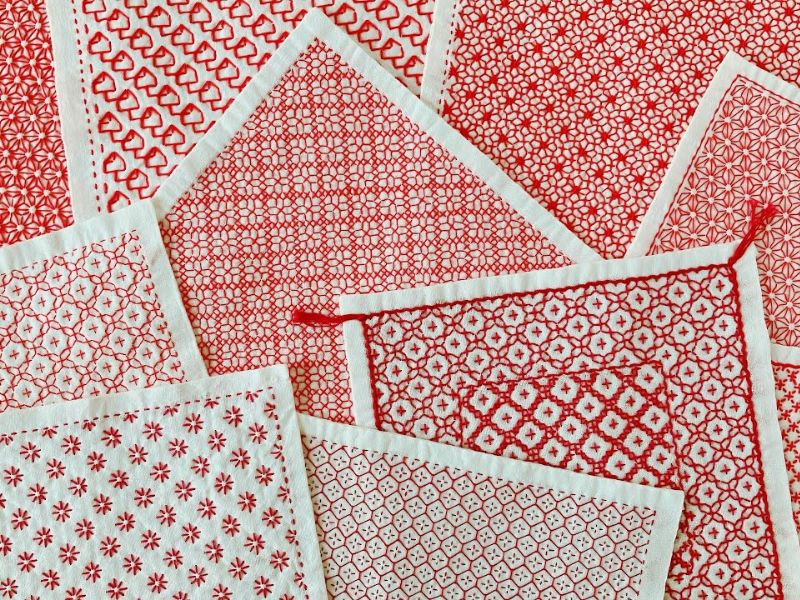
Hitomezashi, also known as Hitomezashi, is a traditional Japanese stitching technique. It involves making small, evenly spaced stitches in a single direction to create intricate patterns and designs. The term “hitomezashi” can be translated to mean “one-stitch” or “single-stitch,” referring to the method of using only one type of stitch throughout the entire piece. This technique is often used in the creation of decorative textiles, such as tablecloths, wall hangings, and clothing embellishments.
Asanoha
In Japan, there is a fascinating tradition where newborn babies are swaddled in cloth that has a distinct hemp-patterned design called Asanoha. This practice is believed to symbolize a wish for the baby’s good health and prosperous growth. The Asanoha pattern is also commonly used in the art of Sashiko, which involves decorative stitching on fabric. Today, the Sashiko technique with the Asanoha pattern remains widely popular in Japan.

“Asanoha” is a traditional Japanese geometric pattern often seen in textiles, ceramics, and other forms of art. It is characterized by a repeating motif resembling hemp leaves and is usually intricately designed with precise lines and symmetrical shapes. The term “asanoha” translates to “hemp leaf” in English, which symbolizes growth, resilience, and good fortune in Japanese culture. This pattern has been widely used in various artistic expressions throughout history, reflecting the rich cultural heritage of Japan.
Nowaki Grasses
Nowaki Grasses, in the context of the textile industry, refers to a pattern that symbolizes “grass blown by the wind”. This particular pattern evokes the image of grass growing in coastal areas, which is known for its durability and strength, much like the resilience and bravery of individuals facing challenging circumstances, often compared to “big waves and strong winds”.
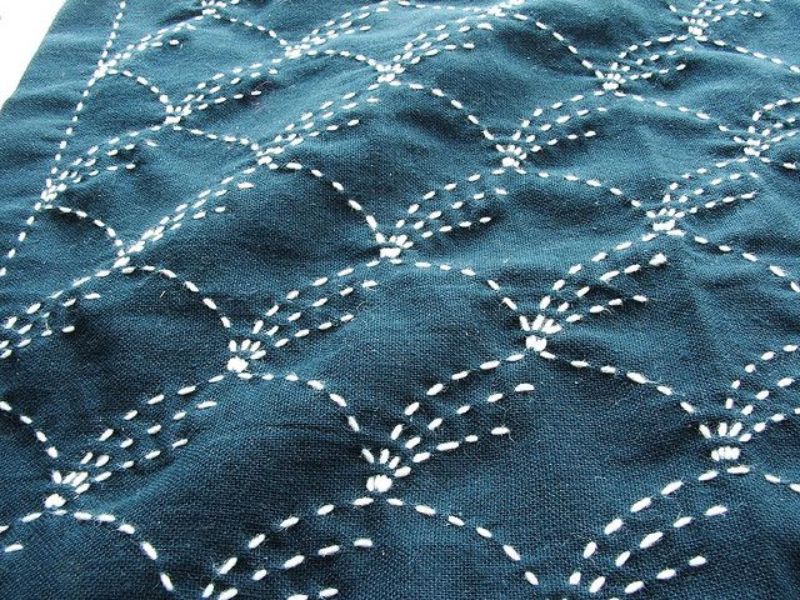
Nowaki Grasses refers to a specific type or variety of grass called Nowaki. This type of grass is characterized by its unique features and qualities. It may have a particular appearance, growth pattern, or color that distinguishes it from other types of grass. The name “Nowaki Grasses” suggests that there are multiple variations or forms of this grass, indicating diversity within the Nowaki grass family. Further information would be needed to provide a more detailed description of the specific characteristics and attributes of Nowaki Grasses.
Kakurezashi
Kakurezashi, also referred to as Sashiko, is a traditional Japanese embroidery technique. In this art form, indigo thread is used instead of white thread, which adds more vibrancy and depth to the patterns. By incorporating indigo thread, the embroidery designs are no longer limited to plain white, but instead showcase a wider range of colors and intricate patterns.
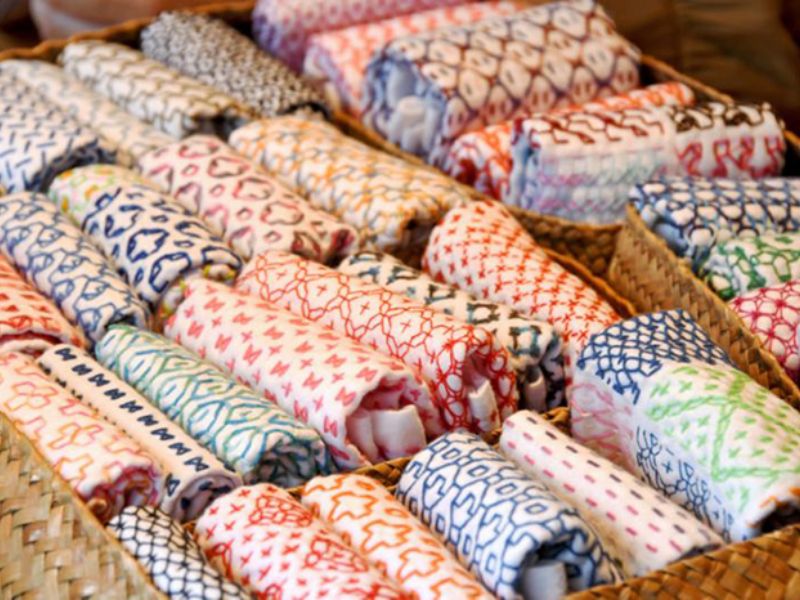
Kakurezashi, which translates to “hidden stitches,” is a traditional Japanese embroidery technique. It is characterized by intricately stitching decorative patterns onto fabric, often using silk threads. This technique requires great skill and precision, as the stitches are meticulously concealed within the fabric, creating a seamless and elegant look. Kakurezashi embroidery is often used to embellish kimono, obi (sashes), and other traditional Japanese garments, enhancing their beauty and value. The artistry of Kakurezashi lies in the careful selection of thread colors and the arrangement of stitches to create stunning designs that blend harmoniously with the fabric. This intricate embroidery technique has been passed down through generations, preserving Japan’s rich cultural heritage and showcasing the craftsmanship and attention to detail that the country is renowned for.
Moyozashi (Moyozashi)
Moyozashi patterns are intricate designs composed of straight lines, curves, or zigzags. These patterns often incorporate motifs or images that hold auspicious symbolism based on ancient beliefs. A distinguishing characteristic of Moyozashi is that the embroidery stitches never intertwine, but instead maintain a consistent spacing between each stitch.
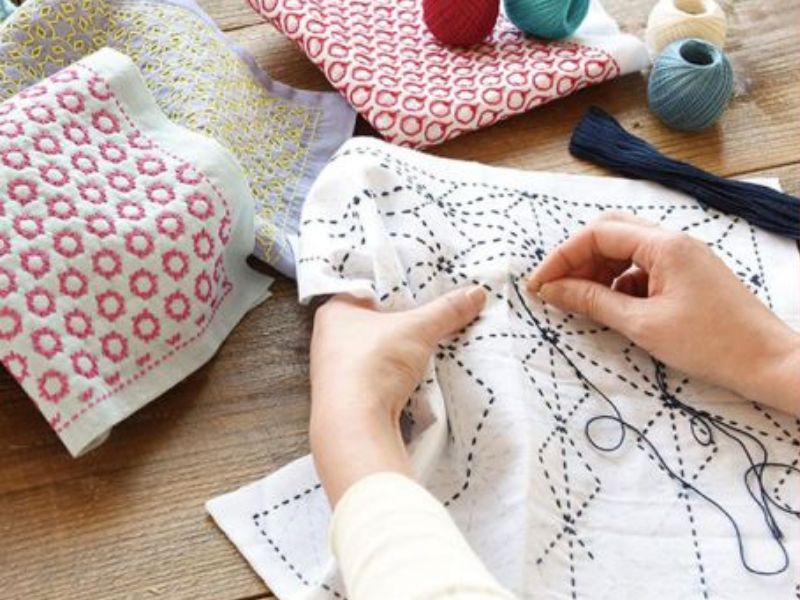
Moyozashi is a traditional Japanese term that refers to a specific style or technique used in various art forms. The term typically denotes a method or approach that involves intricate and meticulous craftsmanship. In essence, Moyozashi embodies a high level of attention to detail and precision in executing a particular artistic or creative process.
Shonai Sashiko (庄内刺し子)
Shonai Sashiko is a traditional embroidery technique that originated in the Shonai, Yamagata region of northwestern Japan. It was originally employed to join multiple layers of hemp or cotton fabric, creating a distinct pattern of intersecting straight lines. This pattern was meticulously embroidered by the Japanese using the running stitch technique.
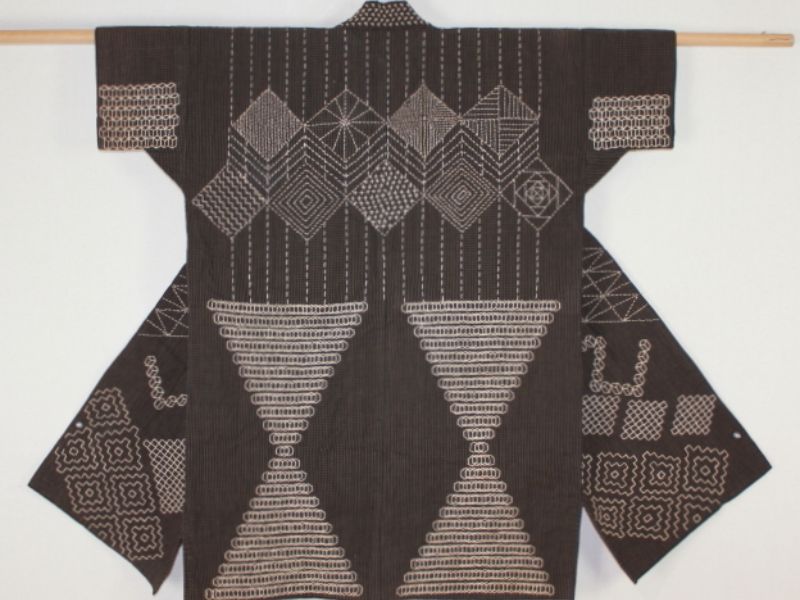
Shonai Sashiko is a traditional Japanese stitching technique called “庄内刺し子” in Japanese. It involves intricate patterns of stitching on fabric using colored thread.
Kogin (Kogin)
Kogin is an embroidery technique that originated in Tsugaru Prefecture, Honshu, Japan. The word “kogin” translates to “small cloth” in Japanese. This technique involves stitching the fabric from side to side using an uneven number of threads, ranging from one to seven. The stitches used in kogin embroidery are long and are typically sewn on the back of the fabric. As a result, the fabric becomes about three times thicker than its original state, which makes it exceptionally warm during the winter season.
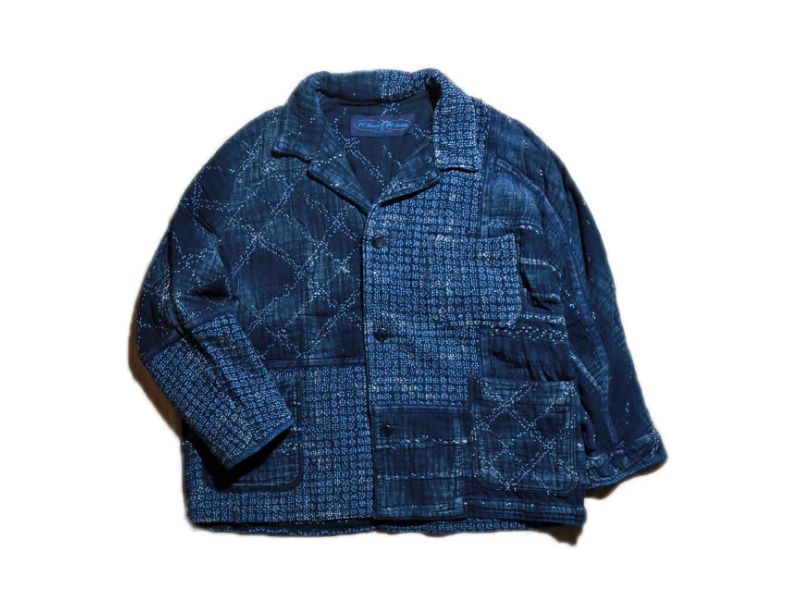
Kogin is a traditional Japanese embroidery technique called “Kogin.”
3. Sashiko in modern culture
Originally, Sashiko was a technique employed to enhance the warmth and durability of fabric. With the rapid advancements in the fashion industry, many may believe that the need for mending torn clothes, like in the past, has become obsolete. Consequently, some may argue that Sashiko is no longer an effective solution in today’s context.
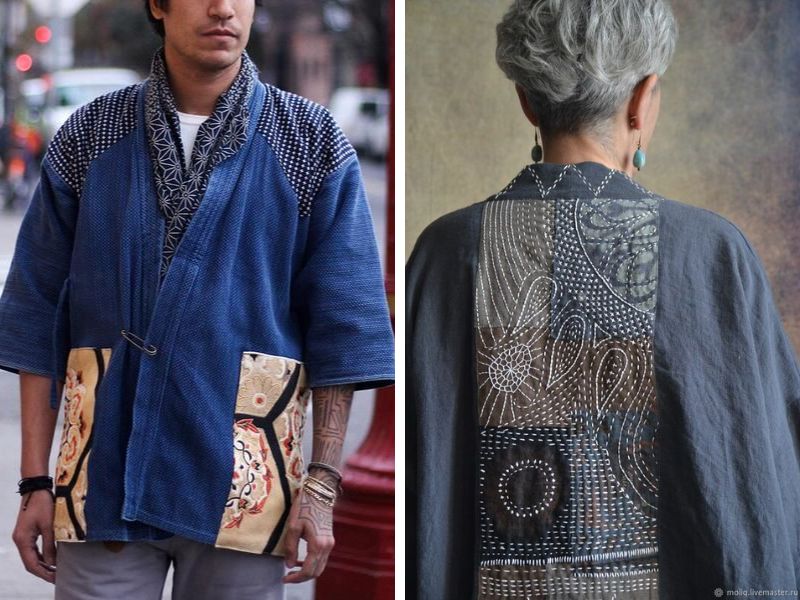
Sashiko, a traditional Japanese form of embroidery, has found its place in modern culture. This intricate stitching technique, historically used to reinforce and repair fabrics, has been reinterpreted and embraced by contemporary artists and designers across different creative industries.
In fashion, sashiko-inspired patterns and motifs are now commonly seen on clothing, accessories, and even shoes. The geometric designs and repetitive stitches of sashiko add a touch of cultural heritage and visual interest to contemporary garments, making them both stylish and meaningful.
Beyond fashion, sashiko has also made its way into home decor and art. Modern interior designers often incorporate sashiko-inspired patterns into upholstery, curtains, and decorative pillows to add a distinctive Japanese touch to living spaces. In the art world, sashiko has become a popular technique for mixed media artists, who combine traditional embroidery with other forms of media such as painting or photography, creating unique and visually captivating pieces.
Additionally, sashiko workshops and classes have gained popularity, providing individuals with an opportunity to learn and practice this ancient craft. These classes bring people together, fostering a sense of community and appreciation for Japanese culture. Sashiko has also become a source of inspiration for DIY enthusiasts, who now incorporate sashiko techniques into their own sewing and crafting projects.
Overall, sashiko has transcended its traditional roots and has become a vibrant part of modern culture. Its intricate and beautiful designs have found their way into various creative fields, enriching the artistic landscape and fostering cross-cultural exchange.
In the past, this particular form of art was primarily used for basic sewing needs. However, it has evolved over time and is now employed as a decorative element for a wide range of products. These include handkerchiefs, bags, coasters, clothing items, blankets, pillows, bed sheets, and more. The art of sewing is no longer restricted to the traditional indigo fabric, as artisans have begun incorporating various colors into their creations. As a result, this technique has become a popular fabric decoration method embraced by many skilled craftspeople.
The Japanese people have gained a reputation for their strong emphasis on saving and minimizing wastage. As a result, the practice of Sashiko, which involves using intricate stitching techniques to mend small tears in clothing, has endured over time.
What sets apart Sashiko from Boro?
In the land of Japan, there are two traditional sewing arts called Boro and Sashiko. These embroidery techniques often confuse people because of their similarities. So, what sets Sashiko apart from Boro? Let’s find out with the help of Fashion Bandung!
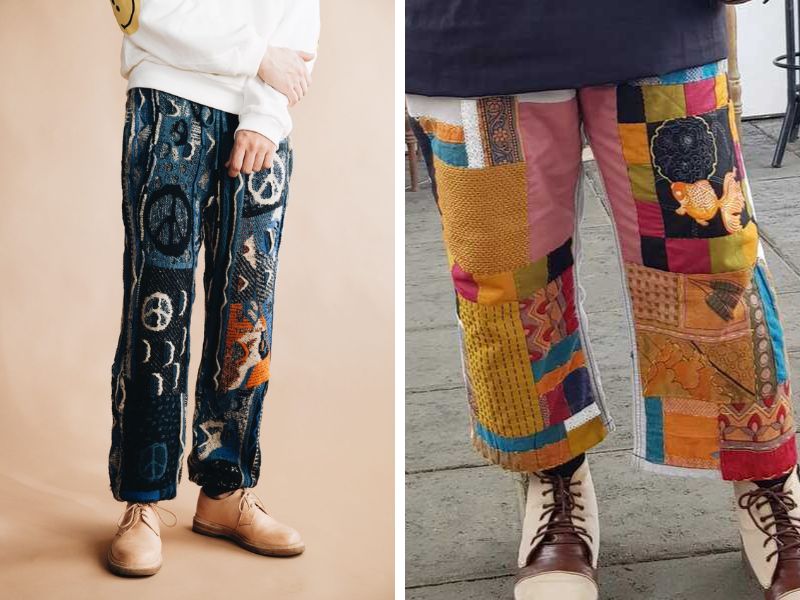
Can you explain the distinction between Sashiko and Boro?
Boro is a traditional Japanese practice that involves mending garments by sewing patches of cloth over large tears or areas of damage. This technique results in a distinctive look, often characterized by discoloration and variations in texture, as different colored fabrics are used for the patches. On the other hand, Sashiko is a form of needlework that emphasizes the art of stitching on fabric to create decorative patterns and shapes.
Traditionally, Boro fabrics were predominantly dyed with indigo to achieve a deep, dark hue. In addition, the Japanese art of Sashiko was often incorporated into Boro textiles to mend and repurpose worn-out garments. While Boro may not be as widely embraced as it once was, it continues to find relevance in the fashion industry, where it is employed to craft distinctive and inventive ensembles that reflect the individuality and personal style of the wearer.
Sashiko supports the fight against fast fashion.
Currently, the fast fashion sector is experiencing significant growth, catering to the clothing demands of the majority of consumers. However, alongside its success, this industry also holds the potential to cause significant harm to the environment, human beings, and the planet. Consequently, the concept of sustainable fashion is gaining attention as individuals are increasingly interested in contributing to environmental protection.
One practical and easily achievable way to prolong the lifespan of fashion items such as men’s shirts, jeans, sweaters, and more is by implementing measures that ensure their longevity. Over time, clothing naturally experiences wear and tear, damage, and fading. However, the question arises as to how we can continue to wear these items without the need to dispose of them wastefully.
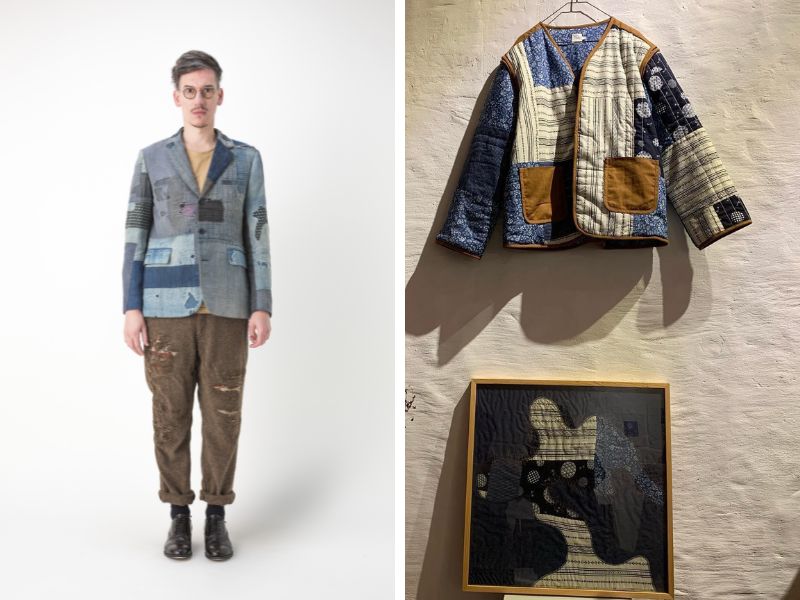
Sashiko plays a vital role in the movement against fast fashion. This traditional Japanese sewing technique, known for its intricate stitching patterns, has gained popularity as a sustainable alternative to mass-produced clothing. By employing the art of sashiko, individuals and communities are promoting slow fashion, emphasizing quality over quantity, and reducing waste in the textile industry. Sashiko’s unique aesthetic and eco-friendly approach contribute to raising awareness about the harmful effects of fast fashion on the environment and the importance of supporting sustainable fashion practices.
If we look back 40 years ago, the existence of Sashiko art was not widely known among people. However, over the past 15 years, the popularity of Sashiko art has been steadily increasing. This can be attributed to the fact that human consumption trends are shifting towards sustainability, with a focus on “slow fashion” rather than “fast fashion”. Slow fashion is seen as a valuable tool to counteract the negative impacts of fast fashion on the environment and society.
Although the original purpose of Sashiko was to cater to the needs of the working poor rather than to protect the environment, it has now become an expression of a “green” lifestyle in the battle against fast fashion. This traditional art of embroidery, known as Sashiko, was not initially intended to be environmentally friendly. However, in today’s world, utilizing this embroidery technique has become a way to promote sustainability and a more eco-friendly approach to fashion.
Try your hand at Sashiko embroidery in the comfort of your own home.
If you have an interest in Sashiko art and want to embroider it at home, don’t hesitate! Get yourself a sample embroidery kit that includes all the necessary materials. The kit includes a full set of needles, thread, scissors, and an embroidery frame. The embroidery frames also come with pre-printed patterns, making it easy for you to create shapes and keep your stitches straight.
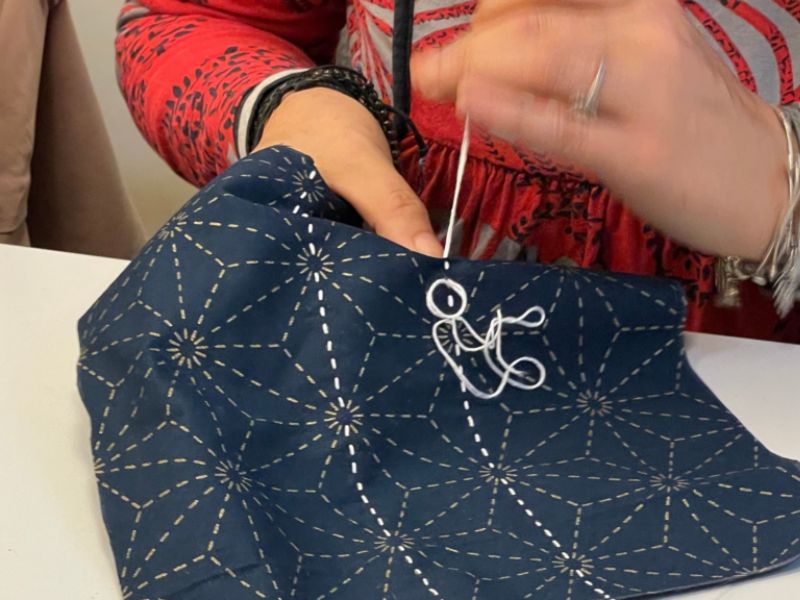
Indulge in the art of Sashiko embroidery from the comfort of your own home. Immerse yourself in the intricate details and delicate stitches of this traditional Japanese craft.
If you are new to the art of embroidery, it is advisable to begin by practicing simple lines such as horizontal lines and straight lines. As you work on your stitches, it is important to remember to mark and lightly draw a straight line on the fabric to guide your embroidery along the desired path of the straight lines.
Some individuals may find it challenging to embroider straight and evenly within the frame, even when it comes to basic embroidery stitches. However, there is no need to fret too much about this. With consistent practice and dedication, you will gradually improve your skills and be able to create beautiful and exquisite works of embroidery.
Therefore, in the aforementioned article, Fashion Bandung has provided valuable information regarding the art of traditional embroidery, specifically focusing on the traditional embroidery technique known as Sashiko from the region of cherry blossoms. It is hoped that this sharing of information will enhance your understanding and knowledge of the fashion industry.
Fashion Bandung is a clothing brand that specializes in providing fashionable clothing options for men. Our brand focuses on delivering stylish and trendsetting garments that cater to the unique tastes and preferences of modern men. From casual wear to formal attire, Fashion Bandung offers a wide range of clothing options that are designed to elevate the style quotient of every man. We strive to provide high-quality garments that not only make a fashion statement but also ensure comfort and durability. With Fashion Bandung, men can confidently express their personal style and stay ahead in the fashion game.

